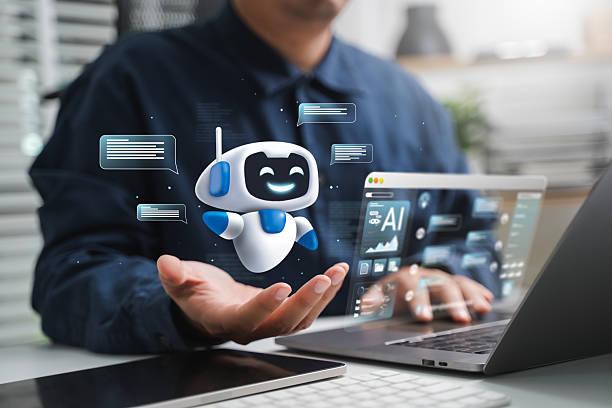In the rapidly evolving landscape of artificial intelligence (AI) and automation, the choice between deploying an AI chatbot or an AI agent can significantly impact operational efficiency and customer satisfaction. This decision is important for leaders of small and medium-sized businesses (SMBs) and automation specialists who are increasingly leveraging advanced technologies. While both solutions harness natural language processing (NLP), understanding their differing capabilities and potential ROI will enable more informed investment decisions.
AI chatbots are essentially designed for conversational interactions. Using NLP, they can respond to queries, assist users in finding information, and provide basic advice, but only in response to specific prompts. Such tools can be invaluable for tasks like guiding customers through FAQs or helping users navigate a service portal. However, their capability is limited by their reactive nature; they do not proactively engage with users or independently carry out tasks beyond predefined interactions.
In contrast, AI agents are a more sophisticated breed. They combine NLP with the ability to make decisions, execute tasks across multiple systems, and learn from interactions. This advanced automation empowers AI agents to not merely respond to queries but to plan, act, and deliver solutions autonomously. Consider a travel platform: a chatbot may merely assist a user in creating a travel itinerary, while an AI agent would interpret the request, scour multiple airlines for flight options, compare prices, book tickets, and send confirmation—all without requiring further user input. This autonomy makes AI agents particularly suitable for complex, multi-step business processes across various functions like human resources, sales, customer service, and e-commerce.
Recent trends indicate that AI agents are gaining traction in applications such as automatic checkout, booking reservations, content summarization, and payment processing. These functions often require meticulous data handling and proactive decision-making—a domain wherein AI agents excel. In contrast, chatbots remain relevant for lightweight functions such as customer support, IT troubleshooting, and basic conversational tasks.
Both chatbots and AI agents are grounded in large language models (LLMs) that enable them to comprehend and generate human language. However, the operational dynamics differ significantly. While chatbots can be deployed with relatively simpler architectures and lower computational needs, AI agents tend to require deeper systems integration, real-time decision-making capabilities, and more advanced AI infrastructures. As such, organizations need to assess their readiness to support and maintain the complexity that comes with implementing AI agents.
Moreover, financial considerations are critical when evaluating these options. The deployment of AI chatbots often entails lower ongoing operational costs, primarily due to their lightweight demands in terms of inference and system management. This makes them a more accessible choice for businesses with tighter budgets or those venturing into AI for the first time. Conversely, AI agents, while potentially offering a higher return on investment through improved operational efficiencies, are more costly both to deploy and maintain, necessitating specialized knowledge in machine learning and infrastructure management.
Consequently, SMB leaders should weigh their strategic vision and organizational capacity before making a decision. Budget constraints will naturally affect these considerations. In situations where cost is a primary concern, chatbots serve as an effective entry point into the realm of AI. However, for organizations aiming for long-term advantages through extensive automation, AI agents provide a compelling case due to their capabilities in handling complex, autonomous tasks.
Another pivotal factor is task complexity. Businesses must assess the nature of the tasks they wish to automate. If the needs are primarily conversational and can be managed through set interactions, then a chatbot may adequately serve that purpose. However, as the complexity of needed operations rises—such as orchestrating processes that involve multiple systems—it becomes apparent that AI agents offer a more fitting solution owing to their capability of executing tasks without direct human input.
The existing capability of internal teams is equally important. For businesses with developers who possess experience in building and operating AI systems, deploying an AI agent could be feasible. Conversely, if in-house expertise is limited, implementing a simpler chatbot might reduce risks associated with complications in system management.
As AI adoption accelerates, especially as we move towards 2025, companies that grasp these differentiating factors will position themselves for strategic advantages. The proper alignment of AI tools with business objectives can lead to improved returns—not only in terms of financial investment but also in increased responsiveness and operational effectiveness.
In summary, the distinction between AI chatbots and AI agents extends beyond mere semantics; it significantly shapes the operational landscape of an organization. By understanding their strengths, weaknesses, costs, and scalability, businesses can make more strategic decisions tailored to their unique needs and capabilities.
FlowMind AI Insight: Organizations must cultivate an awareness of how both AI chatbots and AI agents can serve different operational requirements. By picking the right technology for the right tasks, companies can optimize resource allocation and enhance overall operational performance.

